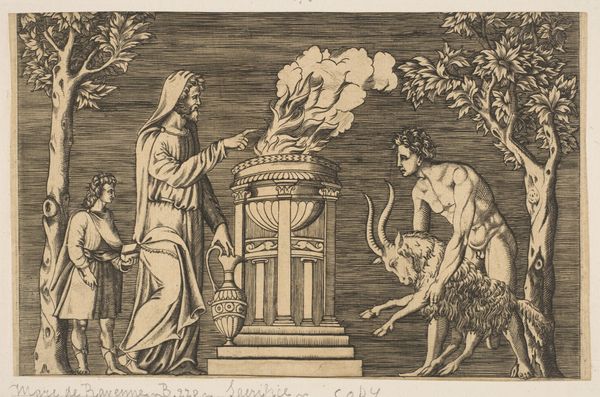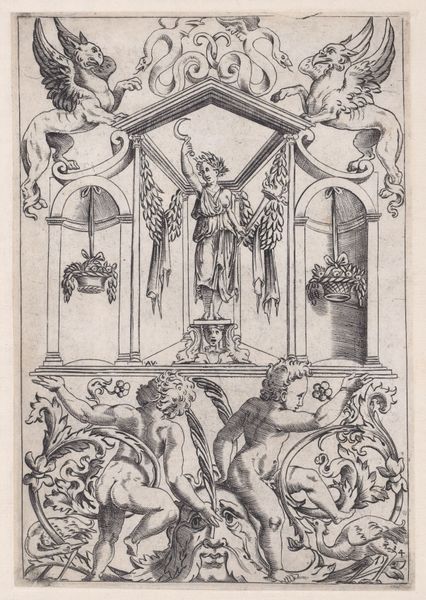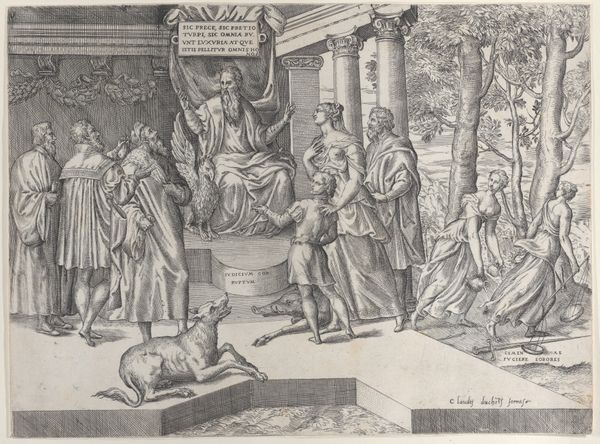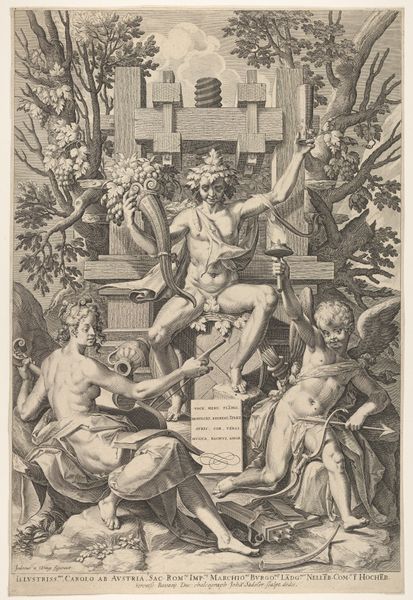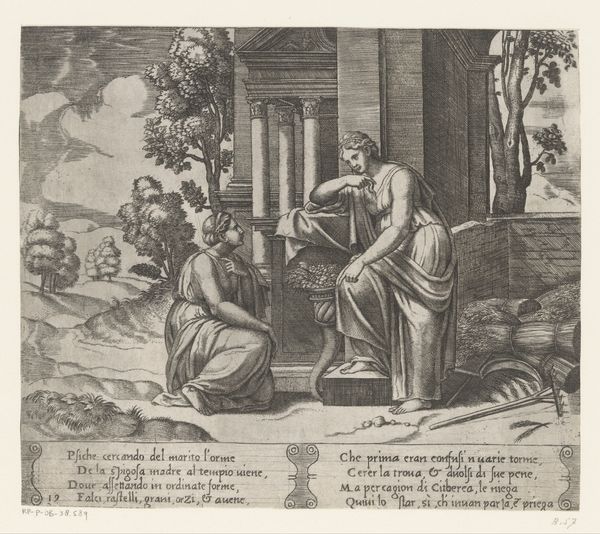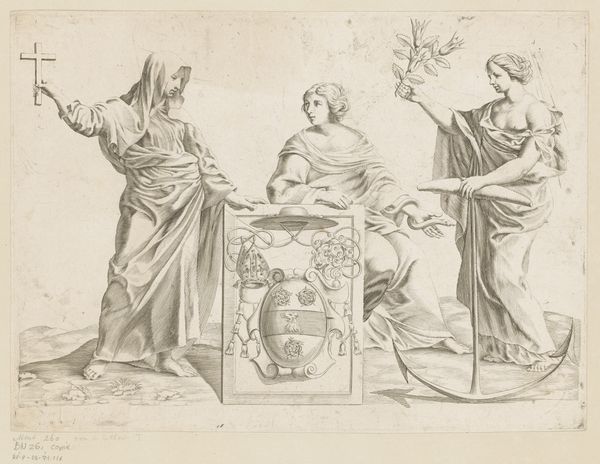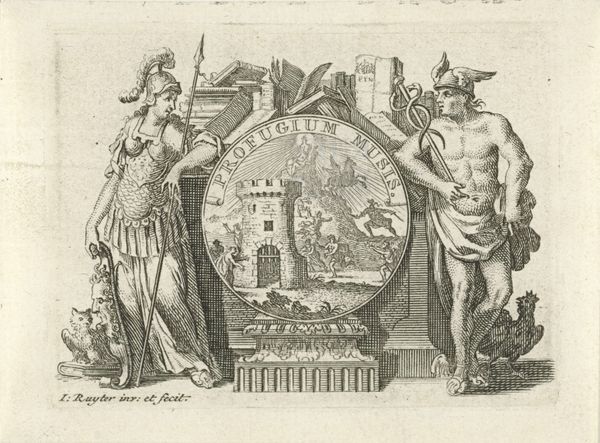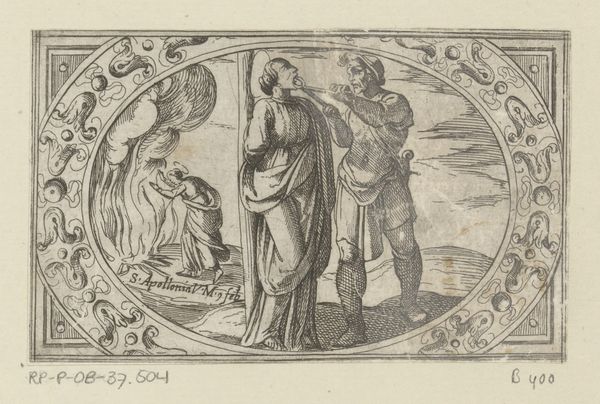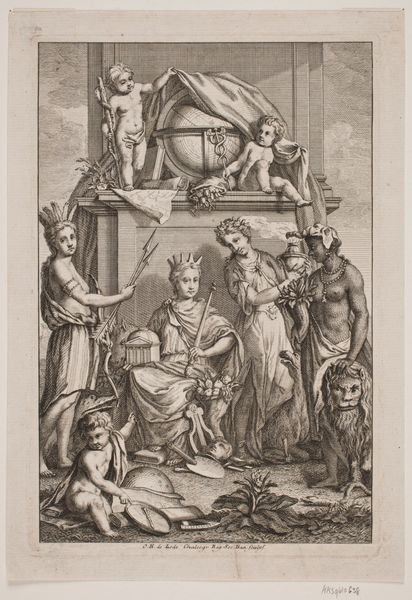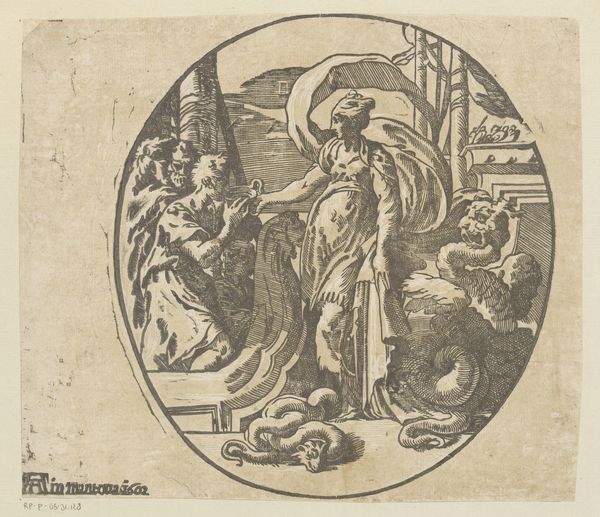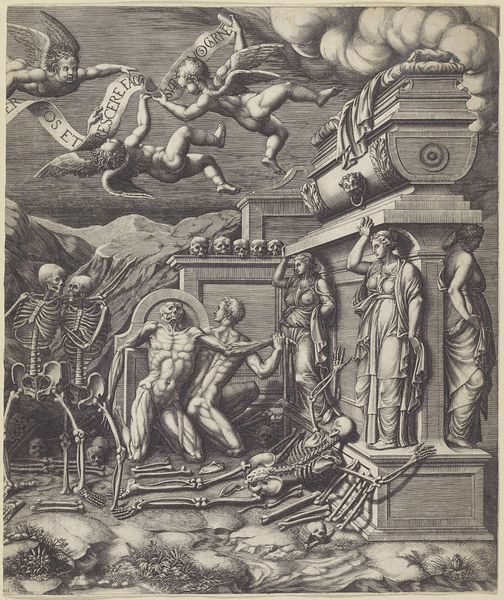
The Sacrifice of a Ram; naked man at right guiding a ram towards an altar pyre, hooded priest at left with a young attendant 1510 - 1532
0:00
0:00
drawing, print, engraving
#
drawing
#
pen drawing
# print
#
11_renaissance
#
history-painting
#
italian-renaissance
#
nude
#
engraving
Dimensions: Sheet (Trimmed): 4 5/16 in. × 7 in. (11 × 17.8 cm)
Copyright: Public Domain
Curator: Before us, we have "The Sacrifice of a Ram," a print by Marco Dente dating from 1510 to 1532. The engraving depicts a classical scene, showcasing a religious rite. Editor: It’s quite striking, almost severe in its stark contrast. The mood is definitely solemn, focused. The flames from the altar pyre leap out. Curator: Indeed. Dente masterfully uses line and shading, but I’m particularly interested in the choice of materials. As a print, it could be easily disseminated, made available to a wider audience, almost democratizing access to such imagery. Editor: Absolutely. This print enters into a broader conversation about power structures and access to spiritual practices within Renaissance society. We have the hooded priest figure and a youthful attendant positioned prominently. The nude figure assisting with the sacrifice suggests another layer: his exposure as vulnerability but also virility, a vital part of the offering. Curator: The physicality of the labor is really palpable, isn’t it? Look at how he's wrestling the ram, really highlighting the effort involved in religious practice, stripping away any sense of divine ease. Editor: Right. And consider who typically performs such acts of service within systems of power. Often, bodies of lower status, particularly the poor and enslaved. Dente's use of a classical theme isn't simply aesthetic, it speaks to timeless dynamics of marginalization, the historical narratives etched into the art itself. What appears to be religious devotion can, in effect, reveal systemic imbalances and inequalities. Curator: Yes, thinking about the consumption of images, its small size makes it readily transportable, a commodity circulating in the social economy. The labor is made invisible at this stage. The artist's work almost disappearing, once multiplied. Editor: But it still triggers conversations, forcing viewers like us to examine ritual, its symbolism, the dynamics of faith and oppression as a recurring aspect of culture. Ultimately this piece shows that an image can hold power even when created and distributed through a material, easily available form. Curator: Indeed, this deep dive certainly shifts our perspectives on this beautiful print and the rituals represented. Editor: Agreed. There's a lingering impact in seeing historical patterns mirrored across eras and cultures, even in a seemingly contained devotional scene.
Comments
No comments
Be the first to comment and join the conversation on the ultimate creative platform.
